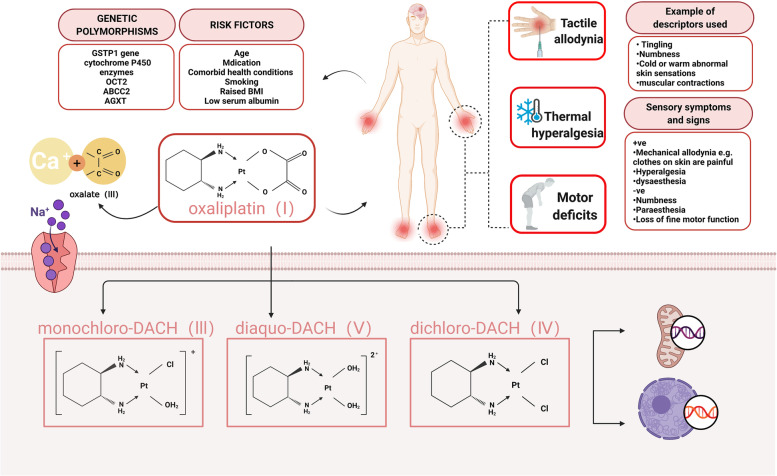Fig. 2.
Oxaliplatin-induced peripheral neuropathy (OIPN)—Clinical features, risk factors, and main mechanism. OIPN is characterized by cold-sensitive peripheral paresthesia and motor symptoms. Risk factors (age, medication, comorbid health conditions, raised BMI, etc.) and genetic polymorphisms (GSTP1, OCT2, cytochrome P450, etc.) are associated with OIPN development. Chemical structure of oxaliplatin, its biotransformation pathways, and a potential mechanism underlying the development of oxaliplatin-induced neuropathy: oxaliplatin (I) is rapidly hydrolyzed in vivo to bioactive derivatives through the displacement of the oxalate group by H2O and Cl− ions to produce oxalate (II) as well as reactive monochloro-diaminocyclohexane (DACH) (III), dichloroDACH (IV), and diaquo-DACH platinum (V) metabolites. Oxalate, which reacts with Ca2+ ions, causes transient impairment of the Nav channel activation of the dorsal root ganglion (DRG) sensory neurons, and nerve hyperexcitability is the main contributor to neurotoxicity caused by oxaliplatin

